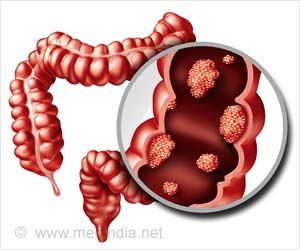The results from a new study have found an explanation for how exercise could improve outcomes for men with prostate cancer

"Prior research has shown that men with prostate tumors containing more regularly shaped blood vessels have a more favorable prognosis compared with men with prostate tumors containing mostly irregularly shaped blood vessels," said Erin Van Blarigan, Sc.D., assistant professor in the Department of Epidemiology and Biostatistics at the University of California, San Francisco. "In this study, we found that men who reported walking at a brisk pace had more regularly shaped blood vessels in their prostate tumors compared with men who reported walking at a less brisk pace.
"Our findings suggest a possible mechanism by which exercise may improve outcomes in men with prostate cancer," continued Van Blarigan. "Although data from randomized, controlled trials are needed before we can conclude that exercise causes a change in vessel regularity or clinical outcomes in men with prostate cancer, our study supports the growing evidence of the benefits of exercise, such as brisk walking, for men with prostate cancer."
The Health Professionals Follow-up Study, which was initiated in 1986, enables researchers to examine how nutritional and lifestyle factors affect the incidence of serious illnesses, such as cancer and heart disease. Every two years, participants receive questionnaires that ask about diseases and health-related topics like smoking, physical activity, and medications taken. Questionnaires that ask detailed dietary information are administered every four years.
Van Blarigan and colleagues investigated whether prediagnostic physical activity was associated with prostate tumor blood vessel regularity among 572 men enrolled in the Health Professionals Follow-up Study. Prediagnostic physical activity was determined through analysis of questionnaire answers. Blood vessel regularity was established by semiautomated image analysis of the tumor samples. Blood vessels that are perfect circles are considered the ideal shape and given a score of 1. Higher values indicate less regular blood vessels.
The researchers found that men with the fastest walking pace (3.3.5 miles per hour) prior to diagnosis had 8 percent more regularly shaped blood vessels compared with men with the slowest walking pace (1.5.5 miles per hour).
Advertisement
Advertisement

![Prostate Specific Antigen [PSA] & Prostate Cancer Diagnosis Prostate Specific Antigen [PSA] & Prostate Cancer Diagnosis](https://images.medindia.net/patientinfo/120_100/prostate-specific-antigen.jpg)












